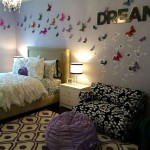Bedroom Ideas With Dark Wood Furniture: Creating a Sophisticated Retreat
Dark wood furniture exudes a timeless elegance and sophistication, making it a popular choice for bedrooms. Its inherent richness and depth can anchor a space and create a sense of warmth and luxury. However, decorating a bedroom with dark wood furniture requires careful consideration to avoid creating an overly somber or oppressive atmosphere. The key lies in balancing the darkness with lighter elements, strategic color palettes, and thoughtful accessorizing.
Successfully integrating dark wood into a bedroom design involves understanding its impact on the overall aesthetic. Dark wood absorbs light, which can make a room feel smaller and darker. Therefore, careful planning is essential to counteract this effect and create a balanced and inviting space. This article explores various strategies and considerations for designing a bedroom featuring dark wood furniture, encompassing aspects of color selection, lighting, texture, and layout.
Balancing Light and Dark: Color Palette Considerations
The color palette is arguably the most crucial factor when decorating a bedroom with dark wood furniture. The goal is to create a harmonious balance between the darkness of the furniture and the lightness of the surrounding environment. Neutral colors, particularly light shades of white, cream, beige, and gray, are excellent choices for walls and bedding. These colors reflect light, brightening the room and providing a visual contrast against the dark wood.
White walls, for example, offer a clean and crisp backdrop that allows the dark wood furniture to stand out without overwhelming the space. Cream and beige tones introduce a warmer and softer feel, creating a cozy and inviting atmosphere. Light gray provides a more contemporary and sophisticated look, complementing the dark wood with its understated elegance. The specific shade of neutral chosen should consider the undertones of the wood itself. Warmer wood tones may pair well with cream or beige, while cooler wood tones might benefit from a touch of gray.
While neutral colors form the foundation of the color palette, incorporating accent colors is essential to add personality and visual interest. Jewel tones, such as emerald green, sapphire blue, and ruby red, can create a luxurious and sophisticated feel when paired with dark wood. These colors provide a rich contrast and enhance the sense of opulence. Dusty rose, lavender, and other muted pastel shades can introduce a softer and more romantic touch, creating a serene and relaxing atmosphere. The key is to use accent colors sparingly, perhaps in throw pillows, blankets, artwork, or area rugs, to avoid overwhelming the space.
Consider the overall mood desired for the bedroom. If the objective is to create a calming and restful sanctuary, opt for cool and muted tones. If seeking a more vibrant and energetic space, bolder and brighter accent colors can be incorporated. Understanding the psychological effects of color can further refine the color selection process. For instance, blue is often associated with tranquility and relaxation, while green evokes feelings of nature and renewal.
It is also beneficial to consider the undertones of the dark wood itself. Is it a warm-toned wood, such as cherry or mahogany, or is it a cool-toned wood, such as ebony or walnut? Matching the colors to the undertones of the wood will create a cohesive and balanced look. Samples of paint colors should ideally be tested in the room under different lighting conditions to ensure that they complement the dark wood furniture effectively.
Illumination Strategies: Layering Light for Ambiance and Functionality
Lighting is paramount in a bedroom featuring dark wood furniture. Because dark wood absorbs light, it is necessary to incorporate multiple light sources to illuminate the room adequately and prevent it from feeling gloomy. A layered lighting approach, which combines ambient, task, and accent lighting, is the most effective way to achieve this.
Ambient lighting provides overall illumination for the room. This can be achieved through ceiling fixtures, such as chandeliers, pendant lights, or recessed lighting. When selecting ambient lighting, choose fixtures that provide sufficient brightness without being harsh or glaring. Dimmable switches are particularly useful, allowing adjustment of the light level to suit different activities and moods. A dimmer allows for creating a soft, relaxing ambiance in the evening and brighter illumination for tasks such as dressing or reading.
Task lighting provides focused illumination for specific activities, such as reading in bed or getting ready at a dressing table. Bedside lamps are essential for reading, and they should be positioned at a height that provides adequate light without causing strain. A desk lamp can be placed on a writing desk or vanity for focused illumination during work or grooming activities. Task lighting should be adjustable, allowing for customization of the light direction and intensity.
Accent lighting is used to highlight specific features or objects in the room, such as artwork, architectural details, or decorative accessories. Accent lighting can be achieved through wall sconces, track lighting, or spotlights. Strategically placed accent lighting can add depth and dimension to the room, drawing attention to focal points and creating visual interest. For example, a wall sconce placed above a piece of artwork can highlight its colors and textures, while a spotlight directed at a decorative plant can add a touch of drama.
In addition to the type of lighting, it is also important to consider the color temperature of the light bulbs. Warm white light, which has a color temperature of around 2700-3000 Kelvin, creates a cozy and inviting atmosphere, while cool white light, which has a color temperature of around 4000-5000 Kelvin, provides a brighter and more energizing illumination. For a bedroom, warm white light is generally preferred, as it promotes relaxation and sleep.
The placement of lighting fixtures is also crucial. Consider the layout of the room and the placement of the dark wood furniture when determining where to position the lights. Ensure that all areas of the room are adequately illuminated, and avoid creating harsh shadows. Experimenting with different lighting arrangements can help determine the most effective way to brighten the room and create the desired ambiance.
Texture and Textiles: Adding Depth and Visual Interest
Incorporating a variety of textures and textiles is essential for adding depth and visual interest to a bedroom with dark wood furniture. Texture helps to break up the monotony of the dark wood and creates a more dynamic and engaging space. The use of carefully selected textiles can introduce softness, warmth, and personality to the room.
Bedding is a primary opportunity to introduce texture and visual interest. Consider using a comforter or duvet cover made from a textured fabric, such as velvet, linen, or faux fur. Layering different textures through the use of throw pillows and blankets can further enhance the depth and dimension of the bed. Experiment with different sizes, shapes, and patterns of throw pillows to create a visually appealing arrangement.
Rugs are another effective way to add texture and warmth to the room. A plush area rug can provide a soft and comfortable surface underfoot, while also defining the space and anchoring the furniture. Choose a rug with a texture that complements the overall design of the room, such as a shag rug for a cozy and bohemian feel, or a sisal rug for a more natural and rustic look.
Window treatments can also play a significant role in adding texture and visual interest. Consider using curtains or blinds made from a textured fabric, such as linen, silk, or velvet. The texture of the window treatments can add a sense of depth and dimension to the windows, while also providing privacy and light control. Layering different types of window treatments can further enhance the texture and visual interest of the room.
Other decorative accessories can also be used to introduce texture and visual interest. Consider adding woven baskets, ceramic vases, or metal sculptures to the room. The different textures of these accessories can create a more dynamic and engaging space. Natural elements, such as plants and flowers, can also add texture and warmth to the room.
When selecting textures and textiles, it is important to consider the overall style and theme of the bedroom. If the objective is to create a modern and minimalist space, opt for clean and simple textures, such as linen or cotton. If seeking a more luxurious and opulent feel, choose richer and more textured fabrics, such as velvet or silk. By carefully selecting textures and textiles that complement the dark wood furniture, a bedroom can be transformed into a stylish and inviting retreat.

How To Decorate With Dark Wood Bedroom Furniture

Neutral Bedroom With Dark Wood Furniture Traditional Houston By Star Houzz

25 Dark Wood Bedroom Furniture Decorating Ideas

How To Style Dark Bedroom Furniture B2c

What Colors Go With Dark Wood Bedroom Furniture Perfect Pairings 2024 Q

25 Dark Bedrooms That Will Make Every Night Enchanting

Bedroom Furniture Ideas Placement Tips Coastwood

20 Dark Bedroom Ideas To Inspire A Moody Retreat

25 Dark Wood Bedroom Furniture Decorating Ideas

What Colors Go With Dark Wood Bedroom Furniture Perfect Pairings 2024 Q








